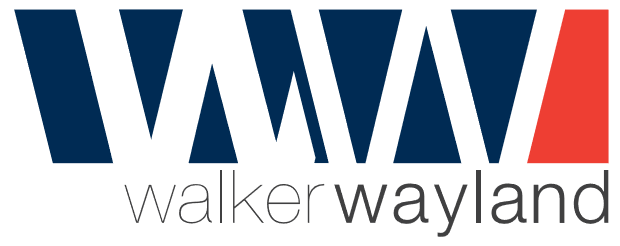As stay-at-home restrictions ease, many organisations are finally beginning to welcome back their employees to the workplace. Shops and restaurants are finally opening up and many states across Australia are beginning to return to some sense of normality.
Our EAP partner Acacia EAP has put together a helpful handbook covering all considerations for employees heading back to work – which we have summarised for your convenience.
It is normal to feel some mixed emotions about returning to the office, some may be feeling a lot of apprehension, even anxiety about the change.
Deal with anticipatory anxiety:

After two years of adapting to these new ways of working, the transition of returning to the workplace presents its own challenges. Potential uncertainties may lead to increased worry, fear, and concern around thoughts on childcare, school, and finances. Employees may be concerned about their safety in the workplace or during the commute to work, especially for those who rely on public transport.
Anticipatory anxiety is the fear, worry, or dread you experience about a future event or experience – and this may be common for many employees during this tumultuous time. Some things to be aware of include:
What does anxiety feel like?
· Increased heart rate
· Breathlessness
· Tension in shoulders
· Dizziness, confusion, trembling
· Nausea, sweating, headache
· Constant worrying, intruding thoughts they may prevent you from sleeping and other activities
Anticipatory anxiety is commonly experienced in response to things we cannot control or predict. Everyone feels nervous about an upcoming event or situation at some time in their lives. These feelings are normal; however, if these uneasy feelings or intrusive thoughts impact our ability to stay focused on daily tasks, sleep, think clearly, or cause uncomfortable physical symptoms, they might be signs of anticipatory anxiety.
What can you do to get on top of it?
- Begin making arrangements around childcare, school, and your work commute
- Stay up to date with government directives, and any PPE and distancing requirements on public transport and in your workplace
- Begin structuring your day to emulate a normal workday routine before your return.
- For example, set your alarm to start work at your usual time. Take a walk to separate ‘commute’ time between home and work
- Plan your working day to include breaks and try to finish work on time
- Manage symptoms of anxiety by engaging in mindfulness and relaxed deep breathing for ten minutes twice a day.
- Reach out to your company’s Employee Assistance Program or other avenues to discuss your feeling of anxiety with a healthcare professional
Getting back to commuting
Many of us have avoided crowded, confined spaces for the last two years therefore heading back onto trains, buses or trams with hundreds of others can be a large source of concern for employees about heading back to work.
There are a few steps you can do to help make this easier:
- Plan your commute: Depending on your capacity, your plan may mean driving and parking during non-peak hours, walking, bike riding, and/or using public transport during nonpeak hours. As you prepare this new routine, remember to support and stabilise your nervous system and mind.
- Stay Informed: Ensure you understand your state’s COVID restrictions and how these may affect your commute. In addition, public transport routes may have changed; remember to check your route online before you leave.
- Understand the Benefits: Remind yourself of the wellbeing benefits of reengaging and connecting with your team in person. Try to engage with these benefits, even if it’s something simple, like grabbing a coffee with a co-worker.
- Consider a Flexible Return: Some organisations may have the capacity to provide a gradual or flexible return to the workplace, such as a combination of working from home and the office, working remotely, compressed hours, or starting work earlier/later than usual. If possible, consider and discuss these with your manager. A gradual return can ease commute anxiety
Dealing with challenging customers or clients

The COVID pandemic has impacted us in many ways, including how we process and respond to triggers, stress, and anxiety. These emotions, combined with panic, uncertainty, and frustration, can impact the way a person interacts, particularly when in a new or unfamiliar environment.
Although we are leaving lockdown, workplaces have new restrictions they must follow. This means you may experience new customer challenges, such as checking vaccination statuses or regulating social distancing.
Unfortunately, not all customers or clients will abide by these rules, and employees may have to deal with challenging customers.
Some tips to help include:
- Stay Calm: When a customer is rude, you will gain nothing from responding in a similar manner. Although this may be difficult, ensure you maintain self-control.
- Let the Customer Vent: Allow the customer to be heard without interruption; this can help them calm down quickly and let them feel ready to negotiate.
- Show Empathy Show empathy to the customer. This means understanding and sharing the customer’s feelings.
- Seek a Solution Once you understand why the customer is unhappy, offer them a solution. Ask them what they would like to see happen. Put forward your own fair and realistic solution to the issue. In most cases, that’s all the customer is looking for.
- Stay Future-focused: Discussing with the customer what you will do in the future to help them will increase their ability to move on and calm down.
- Access Support: Even the most experienced workers have difficulties serving challenging customers. If you are having difficulty processing challenging customer interactions, your EAP can provide you with support, and is available 24/7/365.
We hope some of these helpful steps from Acacia EAP will help you return to your workplace with considered planning & preparedness, easing your adjustment to post-COVID conditions.
This is another article in our new WWNSW Wellbeing Series – we are aiming to share articles, resources and tips weekly with advice from our EAP program to manage stress and promote wellbeing in and out of the workplace.
Reference: https://www.eapcounselling.com.au/tip-sheets/




